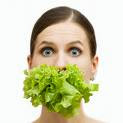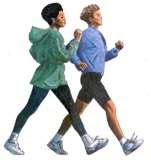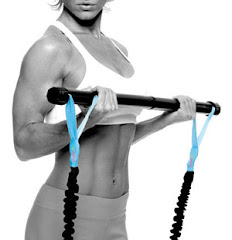
1. Eat 5 meals per day. Smaller, more frequent meals boost your metabolism, increasing the rate at which you burn calories for some time after the meal. DO NOT SKIP the snacks, even if you aren’t hungry. Eat a little something. It will boost your metabolism and your energy level. As you get fitter, you’ll find you are burning more calories and will need the fuel.
a. Breakfast (DO NOT EVER SKIP BREAKFAST)
b. Mid-Morning Snack
c. Lunch
d. Afternoon Snack
e. Dinner
2. Redistribute your calories throughout the day. This is an extremely important aspect to weight loss that is often overlooked. The best way to PUT ON MORE weight is to skip breakfast, eat a light lunch and then power feed at dinner. The old adage from our parent’s day turned out to be true and will guarantee you shed pounds:
a. Eat like a KING at breakfast (biggest)
b. Eat like a PRINCE at lunch (moderate)
c. Eat like a PAUPER at dinner (lightest)
d. Add to that – 2 healthy energy boosting snacks per day
3. Consume 25-30% of your total daily calories at each meal and the remaining 10-25% comes from your snacks.
4. Be wary of portion distortion. Overly large meals actually cause your body to store fat. Consuming a large number of calories at one sitting makes your body secrete an abnormally high amount of insulin, known as an insulin spike. Insulin’s job is to take glucose (sugar) out of the bloodstream and lay it down as body fat – exactly what you DON’T want.
5. Set an eating cutoff time. Stop eating a minimum of 2 hours (and preferably 3) BEFORE BEDTIME. You don’t want to feel ravenous, but feeling a little hungry is a good thing – it’s your body’s way of telling you it is losing fat. Just this step alone will translate into some weight loss.
6. Eat from the rainbow. Eat a variety of healthy foods from all the colors of the rainbow – red, green, yellow, purple, etc. The greater the variety and balance of foods, the healthier you will be. This may take some attitude adjustment but try to think of eating clean as a gift not a punishment.
7. Strive for a balance of carbs, protein, and fats every day. .
a. Carbs are the major source of energy for the body and primary source of fuel for the brain. Without adequate carbs, you can’t burn fat efficiently.
b. Protein is important, but too much reliance at the expense of other nutrients puts strain on the liver and kidneys and will cause the body to break down its muscles to gain energy, resulting in weight gain.
c. Healthy fat is necessary for digestion, creating hormones, and increases your immunity to disease.
The healthiest balance is approximately:
50-60% of calories from healthy carbs
25-30% from fats
15-20% from protein
o Eat 2 servings of fruit and 4 of veggies per day
o Eat 5-7 servings of whole grains/day for necessary fiber
o Fats: Canola oil, avocado, flaxseed, omega 3’s from fish
o Protein: Eat high quality sources that are low in saturated fat.
8. Limit alcohol and drink a minimum of 8 glasses of water a day.
Alcohol has more calories per gram (7) than either carbs or protein (4)
Alcohol slows the metabolism and the effects can last for days.
You tend to eat poorly when drinking and exercise less effectively the next day.





























